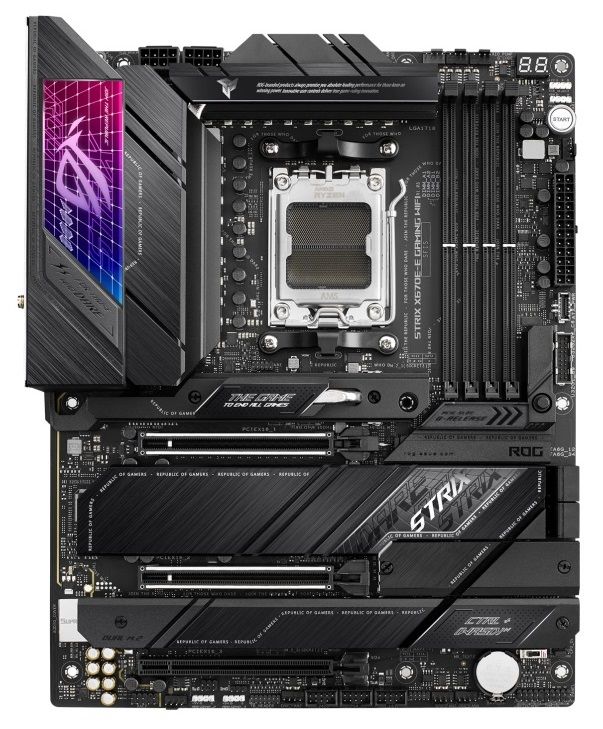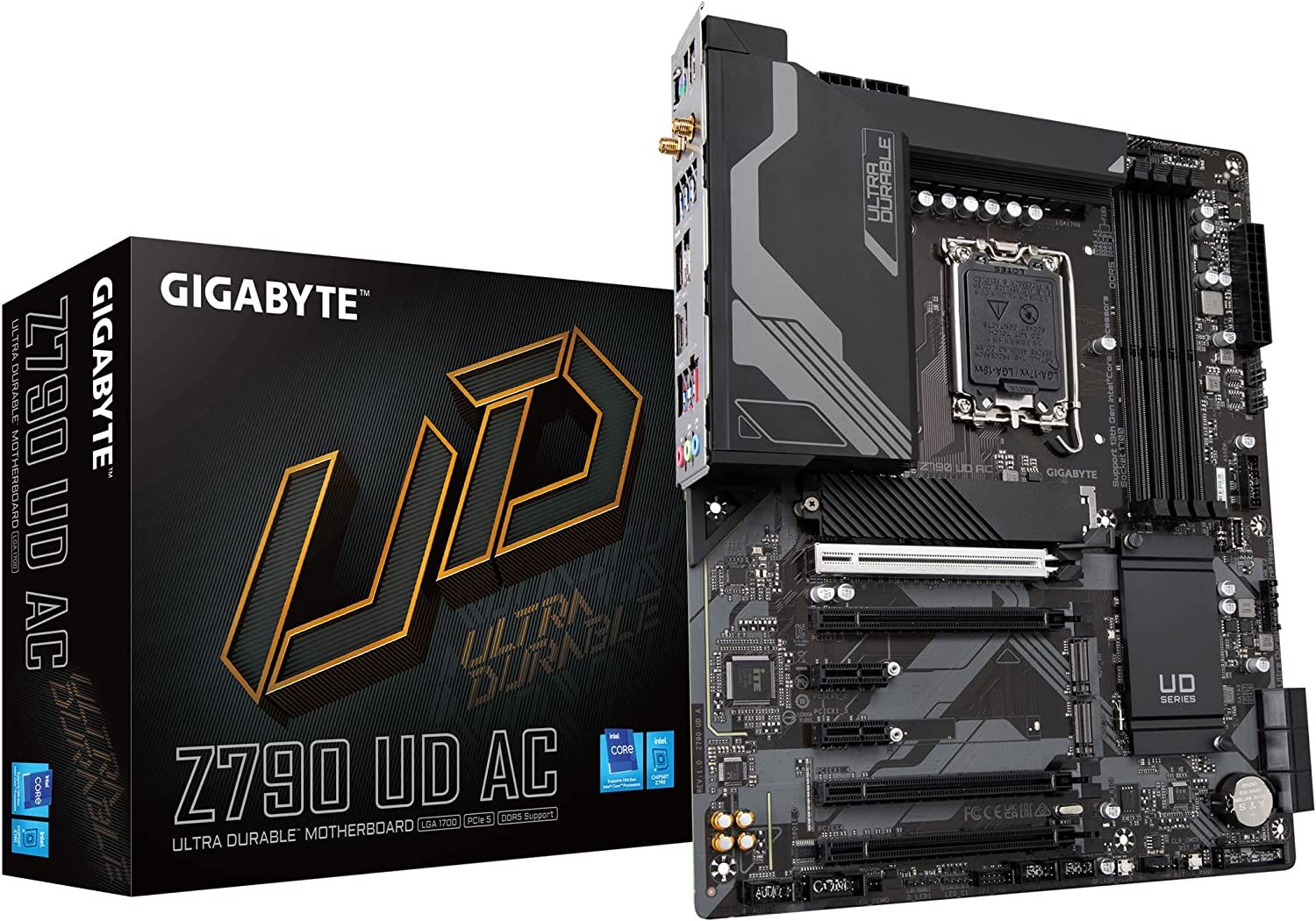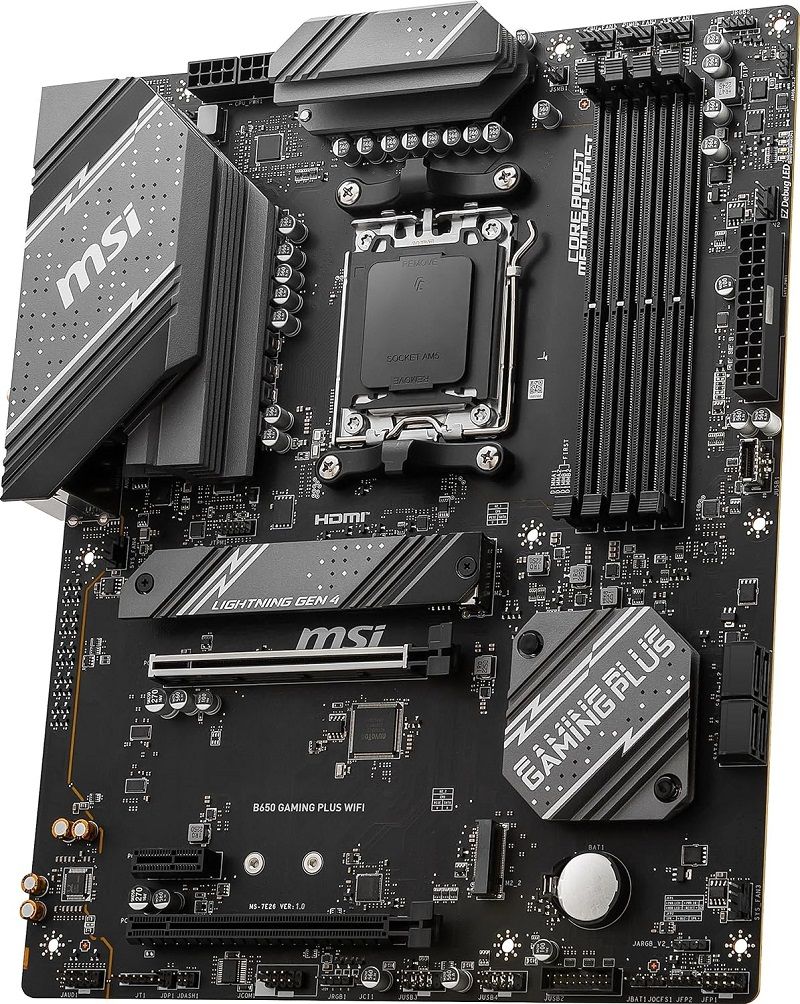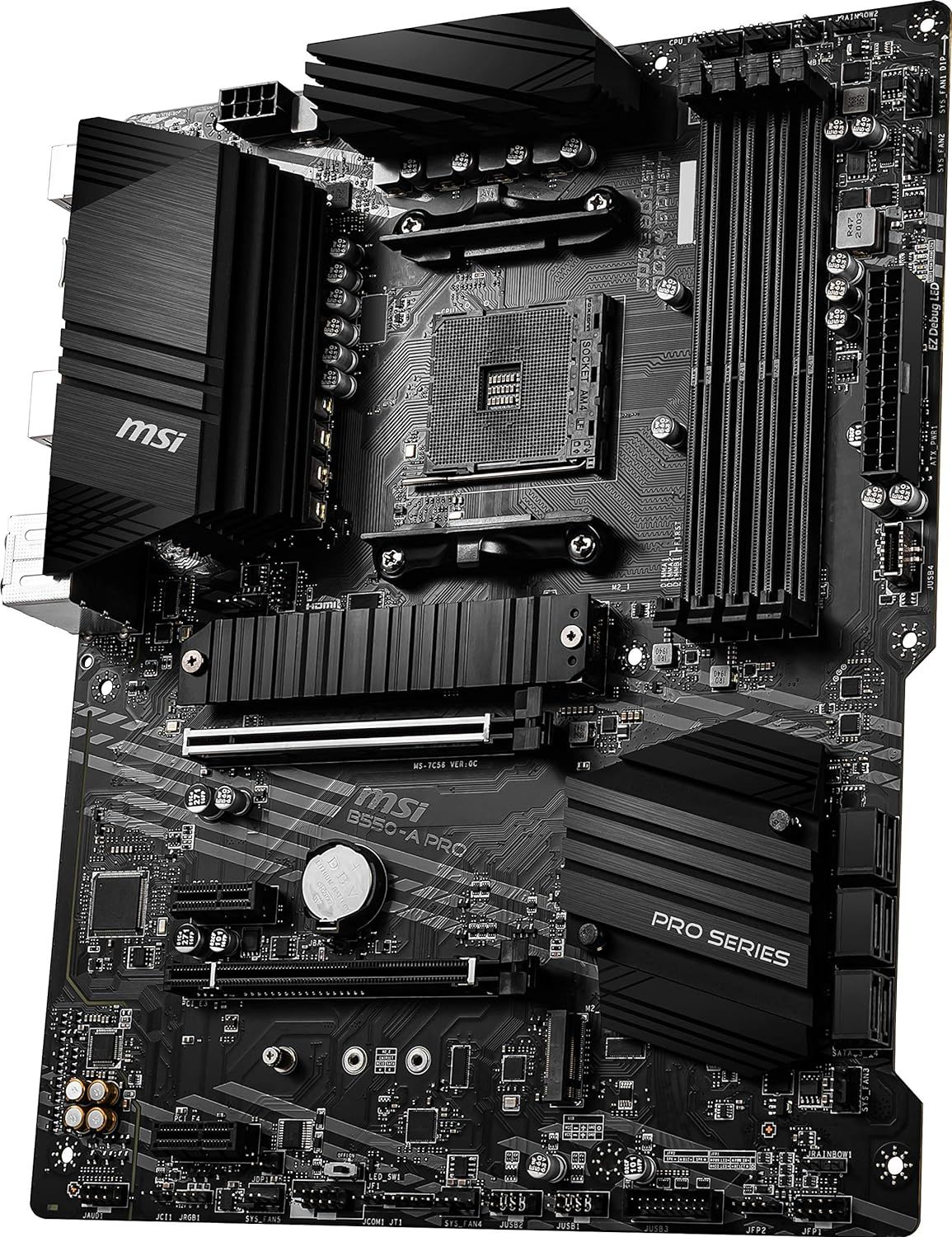ATX motherboards are generally recognized as the standard size and the most common motherboard form factor. This form factor is widely considered ideal for mid-tower and full tower PC builds. Although compatibility varies greatly from case to case, these motherboards can also be utilized in a range of smaller builds with minor adjustments. This overall versatility makes ATX motherboards a popular solution for a variety of PC builders.
ATX motherboards also stand out for their overall functionality and a wide array of onboard features. Unlike their small-scale sibling, the mATX motherboard, ATX motherboards tend to boast greater voltage regulator module (VRM) phases, an abundance of internal ports and headers, and more slots for PCIe expansion.
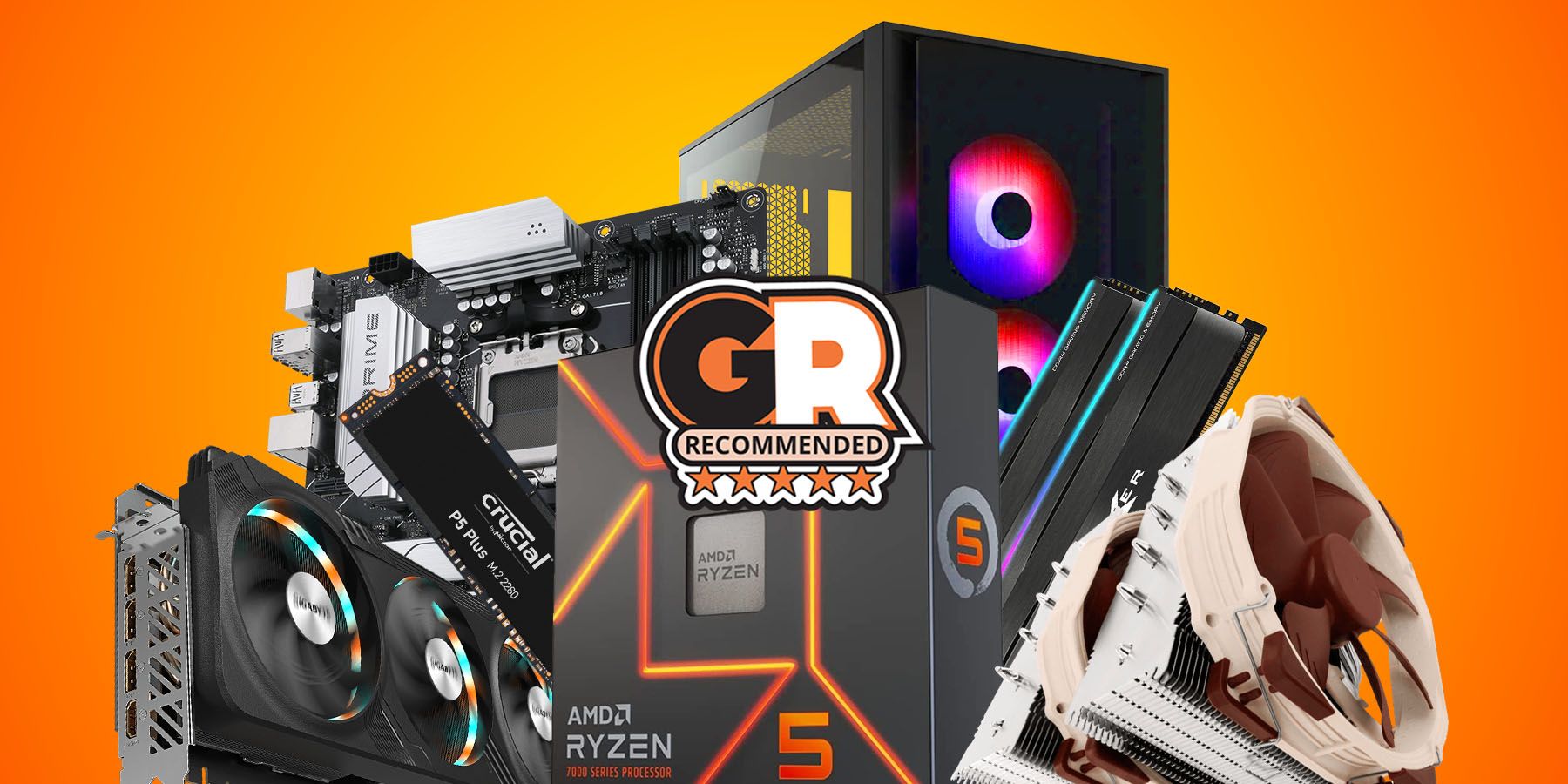
The Best Gaming PC Builds Under $2000
Need to build a PC on a budget? Here are the best builds you can make yourself for under $2000!
Regardless of whether the preferred CPU socket is Intel or AMD, ATX motherboards are a great go-to choice for many. The availability of high-quality options on the market ensures that users can find the best ATX motherboard tailored to their specific PC requirements, whether it's gaming, content creation, productivity and work, or any other needs.
Factors To Consider When Choosing an ATX Motherboard
Before purchasing an ATX Motherboard, users should consider several key factors to inform their final decision:
- CPU Socket: Users must first settle on a preferred CPU model. The two most common options are Intel and AMD, with the latest sockets being Intel's LGA 1700 and AMD's AM5 socket. Each CPU boasts its own pros and cons, and this decision is based purely on personal preference and circumstances. For a further breakdown of CPUs, this Game ZXC article lays out the facts and compares these two popular processor manufacturers head to head.
- Compatibility: To put it simply, choosing components that are compatible with a motherboard (or vice versa) is the most important decision to make, as the motherboard acts as the hub that ties the entire system together. It's up to the user to decide on the memory type and size, typically between DDR5, DDR4, or an earlier generation. However, it should be noted that users will have an easier time finding ATX motherboards that support the latest DDR5 RAM. Next, the user should verify that their PSU has enough wattage to support both their components and the motherboard. Finally, the user will need to verify their chosen PC case is compatible with ATX motherboards. Luckily, this should be simple as most PC cases feature and advertise ATX compatibility.
- Performance: Although a motherboard does not immediately and outwardly affect performance in the same way a processor or graphics card does, a motherboard lacking in some features can hold performance back. Leaning back on the importance of compatibility, choosing a motherboard that can properly support the performance needs of components such as NVMe SSDs can prevent them from being held back performance-wise.
- Overclocking: Motherboards also play a role that greatly influences the experience and stability of overclocking. Firstly, a high-end motherboard can facilitate enough power to properly overclock a component with the presence of better VRMs. To also aid in the experience of overclocking, these boards typically have additional forms of cooling such as heatsinks and sometimes even fans to best prevent overheating and damage incurred while overclocking.
- Connectivity: A motherboard's connectivity is self-explanatory. Users should prioritize motherboards that offer enough internal headers and I/O ports to properly suit their needs. A motherboard that offers both Ethernet and Wi-Fi connectivity is a bonus that will allow users future versatility.
- Onboard Features: Selecting a motherboard that contains ample onboard features will vastly improve the user experience during troubleshooting and building. Look for features such as debug lights, BIOS Flashback button, CMOS button, and a start button to improve ease of troubleshooting.
Game ZXC's Picks For The Best ATX Motherboards
ASUS is one of the most well-known motherboard manufacturers, reputed for their outstanding quality and constant innovation. The same sentiment can be said when talking about the ROG STRIX X670E-E. This motherboard is well-equipped for compatibility and supports the latest and fastest components, such as AMD's latest AM5 socket and DDR5 RAM. The amount of care and thoughtful design that has gone into this motherboard cannot be understated.
The ROG STRIX X670E-E is a visually appealing board, complete with ample cooling measures and a software-controlled RGB I/O Shroud. In terms of onboard features, this motherboard was built to be DIY and beginner-friendly. Users will find ample headers and PCIe slots to suit their needs, and if they encounter any issues during assembly, this motherboard has their back. Although debug lights are becoming more commonplace on modern motherboards, the ROG STRIX X670E-E takes it one step further with its Q-Code display, showing users diagnostic status and boot errors in an easy-to-understand format. This motherboard also has a convenient start button, CMOS clear, and BIOS flashback button to further aid in common troubleshooting measures.
The ROG Maximus Z790 Dark Hero is a vivid ATX motherboard that promises fantastic overclocking performance, stability, and cooling. This motherboard features heatsinks and thermal pads over the VRM and M.2 drives to keep the components cool. There is also a metal backplate on the underside of the board to promote stability, which is especially beneficial for large graphics cards and heavy CPU coolers.
Much like the X670E-E, this motherboard possesses ample onboard features and buttons to aid in ease during building and troubleshooting. These features include ASUS' PCIE Slot Q-Release to easily remove the GPU, Q-LEDs, and a Q-Code display for easy diagnosis, as well as a BIOS flashback and CMOS clear button on the I/O.
The MSI MAG X670E Tomahawk motherboard is a well-balanced option for those seeking an AM5 board that features quality design and a handful of onboard features, without breaking the bank. Designed to support the latest and greatest components, this motherboard stays cool thanks to its many heatsinks that also feature thermal pads.
The MSI MAG X670E Tomahawk also features a reinforced design that can sustain the weight of heavy GPUs, like the RTX 4090 or RTX 4080, reducing the chance of failure or damage. This reinforced design can be seen on the back of the motherboard, where additional soldering has been placed to protect fragile connections.
Gigabyte's Intel Z790 UD AC motherboard is considered a balanced and robust option for Intel users seeking to upgrade to the latest technology, without the need or desire to splurge on an overly expensive motherboard. Although somewhat understated in its visual prowess, the latest Intel processors, high-speed RAM, and high-end graphics cards will encounter no compatibility issues with the board's LGA 1700 CPU socket, four DDR5 DIMM slots, and the PCIe 5.0 x16 lane.
Finally, this motherboard stands out from others on this list because of its comprehensive number of PCI expansion slots, allowing the user plenty of freedom to upgrade PCIe devices such as video capture cards, or even an additional GPU for an added performance boost while gaming or rendering.
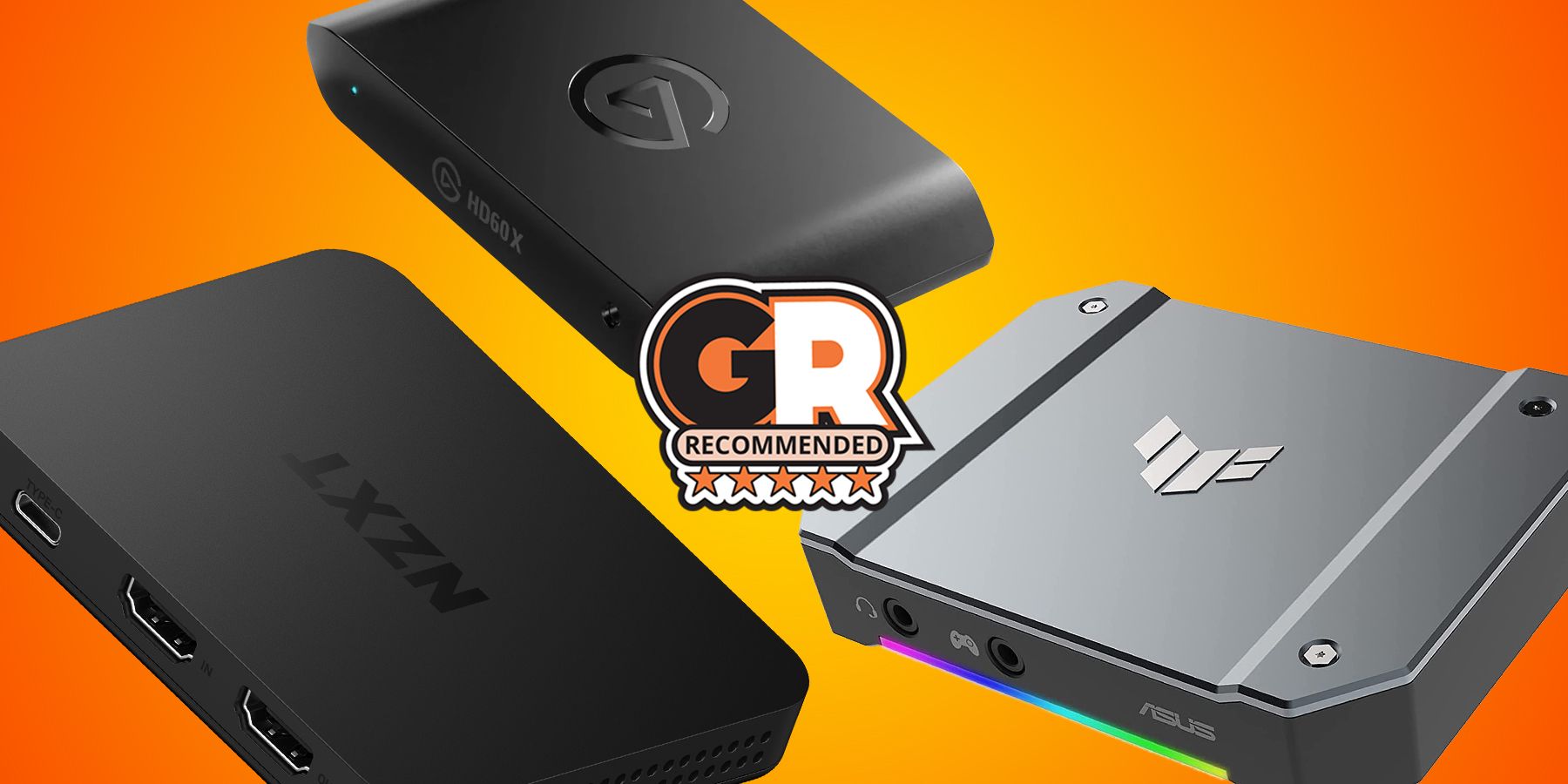
The Best Capture Cards in 2024
From 1080p 60fps to 4K 60 fps, these capture cards are the ultimate answer to uncompressed video quality for streaming and recording gameplay.
Finding a quality, next-gen motherboard that is also budget-friendly can be somewhat difficult. Luckily, with the MSI B650 Plus Wi-Fi, this doesn't have to be an issue. This motherboard supports Ryzen 7000 series CPUs and DDR5 RAM. However, it should be noted that overclocking on this motherboard is best suited for mid-range to budget CPUs.
Troubleshooting with this motherboard may prove to be more of a slight nuisance than usual, due to its lack of user-friendly troubleshooting features. Users experiencing issues with booting may have to resort to shorting pins or removing the CMOS battery, among other traditional troubleshooting methods. That being said, there is a debug LED featured on the board, which is more than enough in most cases. Despite these considerations, the included performance and functionality associated with this motherboard far exceed its price point, making it a fantastic option for price-conscious users.
Understandably, not every user can easily jump to the next generation of components as soon as they hit the market. To those who are perfectly content with their DDR4 RAM and AM4 CPUs, worry not! The MSI B550-A Pro provides an excellent alternative that also happens to be lighter on the wallet. Although the B550 is the predecessor of the B650 chipset, it is not far behind its older sibling in terms of functionality.
The B550-A Pro incorporates several enhanced cooling features that allow for easier and more stable overclocking, such as VRM and M.2 heatsinks, and a copper-thickened PCB to aid in overall heat dissipation. Like other contenders on this list, this motherboard features several troubleshooting measures to make life much easier, such as debug lights and a BIOS flashback button. Although this motherboard does not come with Wi-Fi included, that can be easily remedied by utilizing one of the additional PCI slots.
In short, the B550-A Pro strikes a balance between affordability and design, making it a great choice for users who prefer to stick with their last-generation hardware for the time being.
FAQ
Q: What is the most reliable motherboard brand?
ASUS, Gigabyte, MSI, and ASROCK are all reputable brands known for quality motherboards.
Q: Are expensive motherboards better?
Expensive motherboards usually offer more functionality, which aids in both a better experience and ease of troubleshooting. These motherboards also offer better support for the latest components.
Q: What's better: Intel or AMD?
AMD and Intel are closely matched in processing power. However, with the latest Ryzen series processors, AMD offers better gaming performance than Intel. This Game ZXC article goes into greater detail comparing the two.

